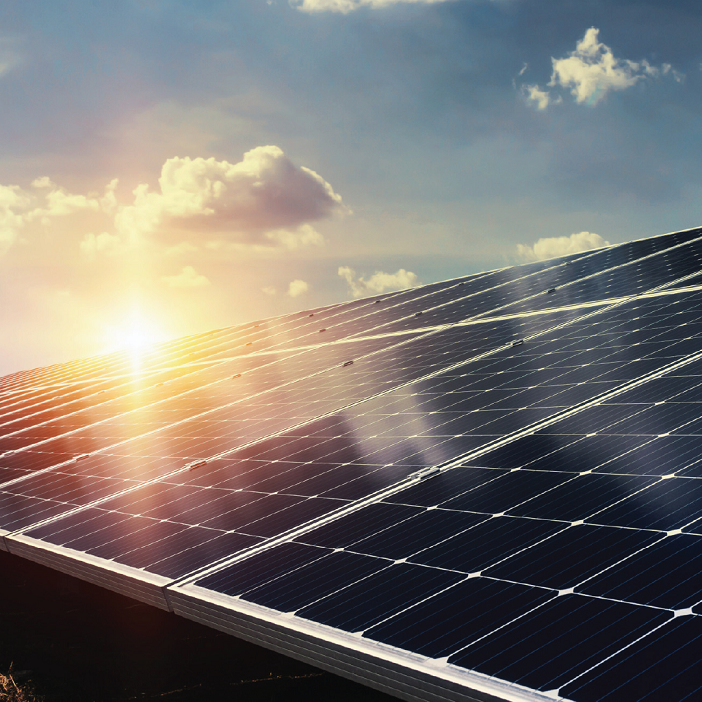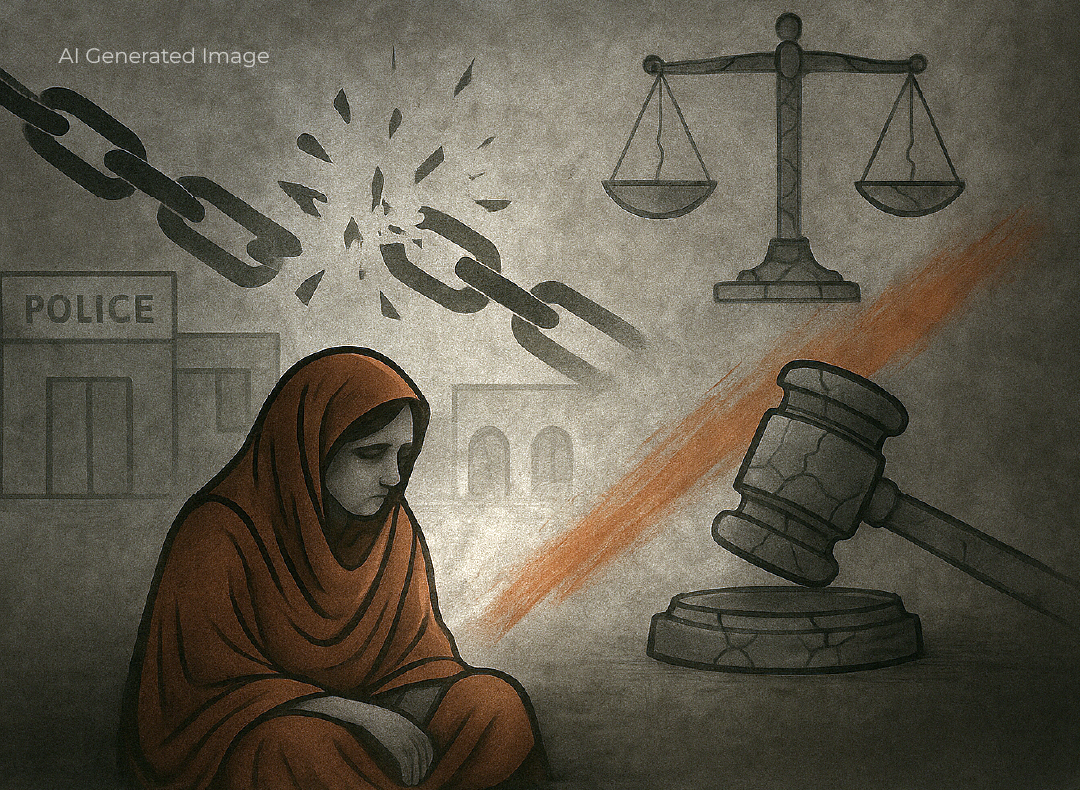Balochistan has been facing a severe electricity crisis for a long time and it has badly affected all sectors, including agriculture, health, and education, in the province. For the last few years, the situation has turned so bad that cellular networks also stop working in many areas due to unavailability of electricity.
Most of the districts of Balochistan get barely two to three hours of electricity per day on the pretext of theft and non-payment of bills and the government institutions also acknowledge these facts.
However, due to the penetration of solar power, the agricultural sector and many other sectors of the province are witnessing drastic changes.
It is challenging to supply electricity through transmission and distribution lines to the population of around 15m people scattered over an area of 347,190 sq km of the rough terrain of Balochistan. Moreover, there are problems of electricity theft, law and order and revenue recovery issues.
Muhammad Afzal Baloch, the spokesperson for the Quetta Electric Supply Company (Qesco), says that Khuzdar is being supplied electricity from Dadu, Loralai from Dera Ghazi Khan and Uch and Sibi from Guddu grid station while Hub gets electricity from Karachi.
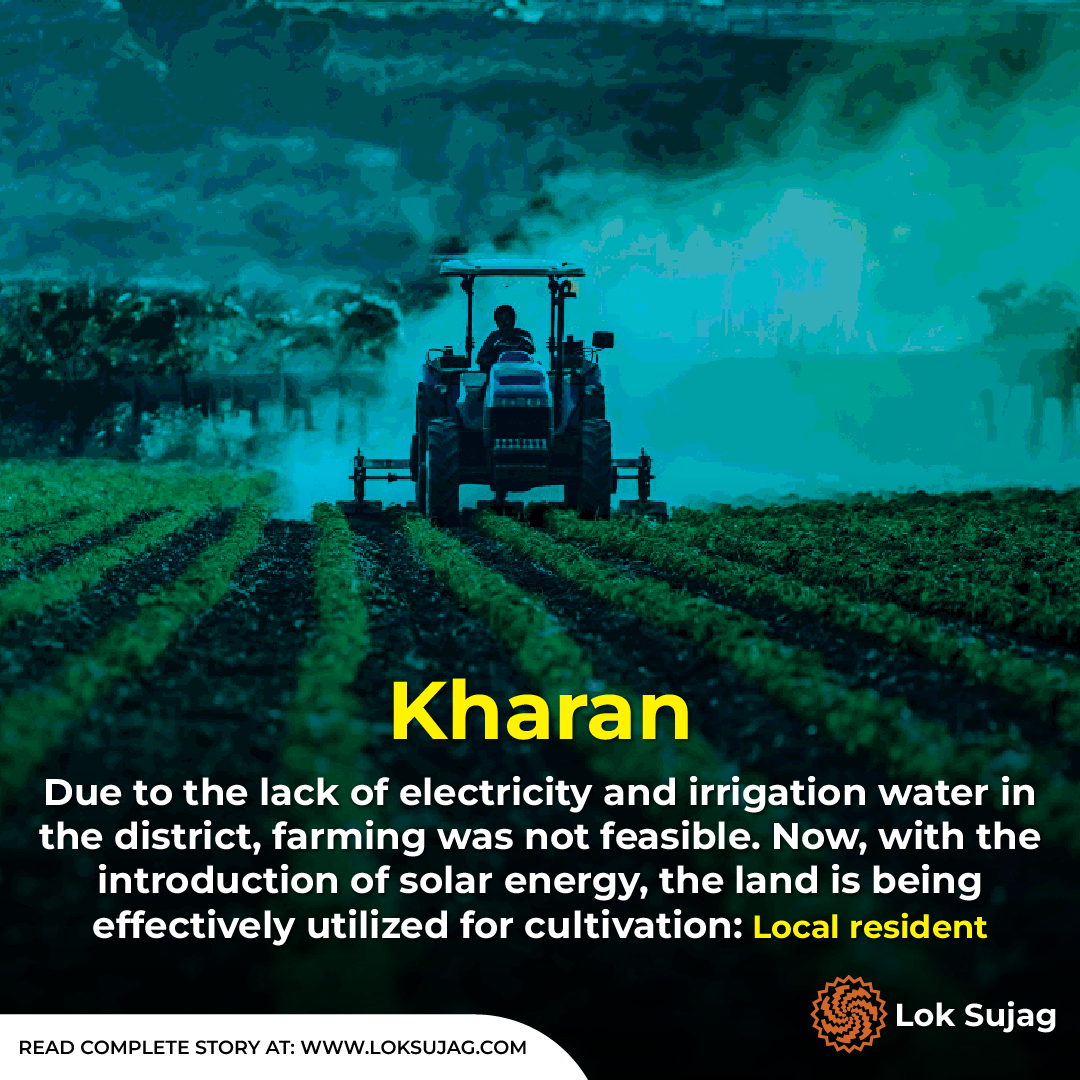
He says that the Jeekor , Mand and Jiwani areas in the Makran division are getting electricity from Iran while other districts of Balochistan get power supply from Qesco.
“Currently, we (Qesco) get 600MW to 800MW of electricity, which is sufficient for Balochistan but it can’t provide full supply to the population due to unpaid bills.”
After the commodity became expensive, it became almost impossible for the farmers to use agricultural tube wells. Landlords who could afford electricity were also helpless in the face of the power outages.
According to a 2022 report of the Department of Agriculture Balochistan, the arable land in the province is about 7.1m acres (16pc of the entire area) but crops are cultivated on only about 3m acres (41pc of the arable land). Thus, the unavailability of water leaves 59pc of the arable land without crops.
Until a few years ago, vast tracts of agricultural land were barren in Balochistan’s remote Kharan district. However, the people are now overcoming irrigation due to the solar system.
Where load shedding and high electricity bills have pushed common farmers towards solar energy, the government has also reduced taxes on solar panels.
International organizations were already giving proposals to Pakistan to promote renewable energy sources to deal with climate change.
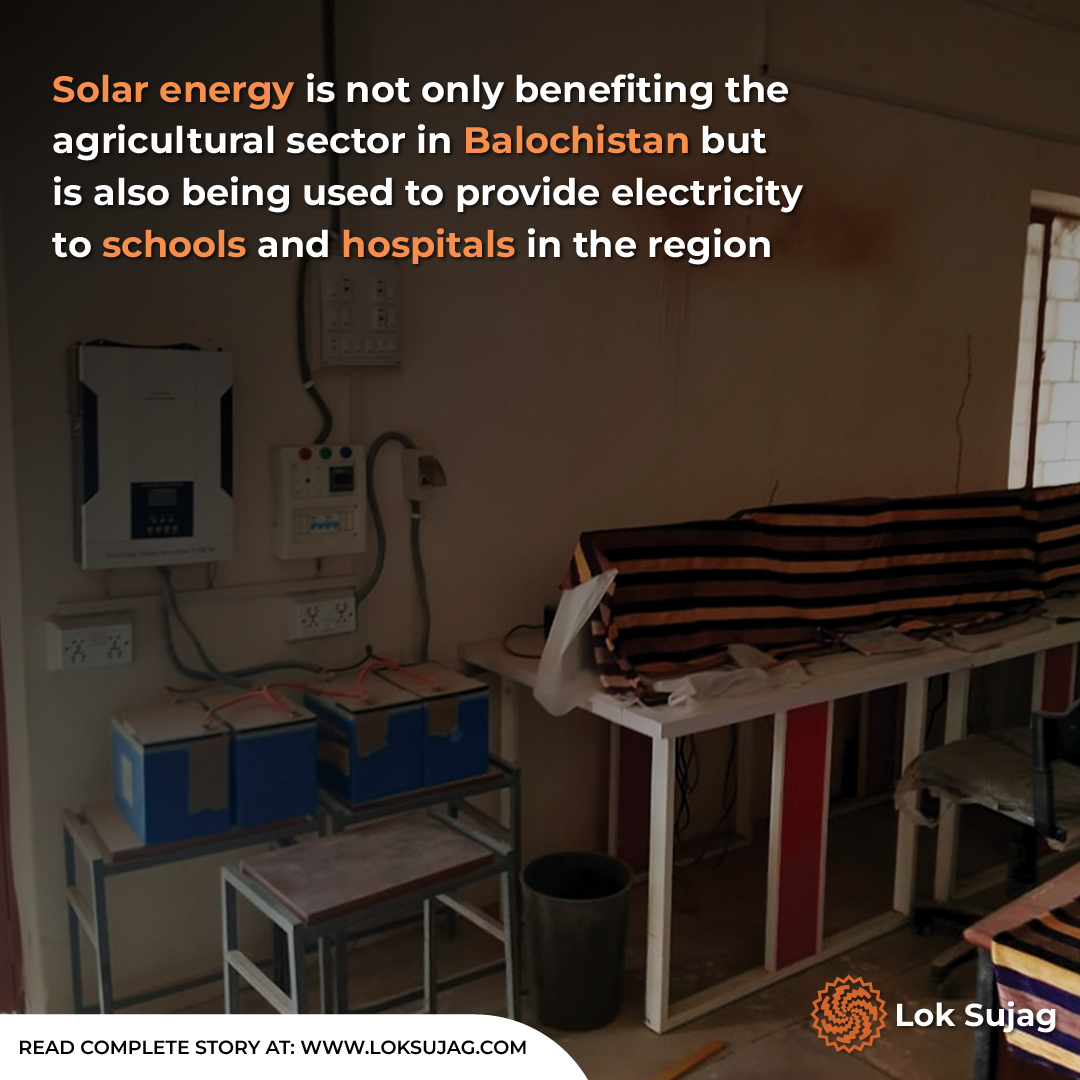
Ehsan Baloch, a landowner in Kharan district, says the district had no electricity and crops could not be cultivated due to lack of water for irrigation. “However, people have started finding solutions to this long-standing issue through solar energy, which is improving the productivity of these lands.”
He says running a tube well or having bore water with electricity, diesel engines, and tractors is very expensive. Shifting to a solar system saves them from the repair and maintenance issues.
“We (the farmers) suffered a lot due to power shortage and outages. Now most people are shifting to solar power systems as it is convenient and prevents crops from drying up.”
Along with the agriculture sector, the solar system is also benefitting the schools and hospitals of Balochistan.
Speaking to Lok Sujag anonymously, an education department official says that only 65 out of the 266 government schools have electricity. Children suffer a lot during loadshedding in schools but the situation is also improving, he adds.
Safi Shafi, an officer in Kharan’s education department, says that UNICEF has provided support for installing solar panels, batteries and fans in five high schools of Kharan and the solar energy has brought about some relief for the students.
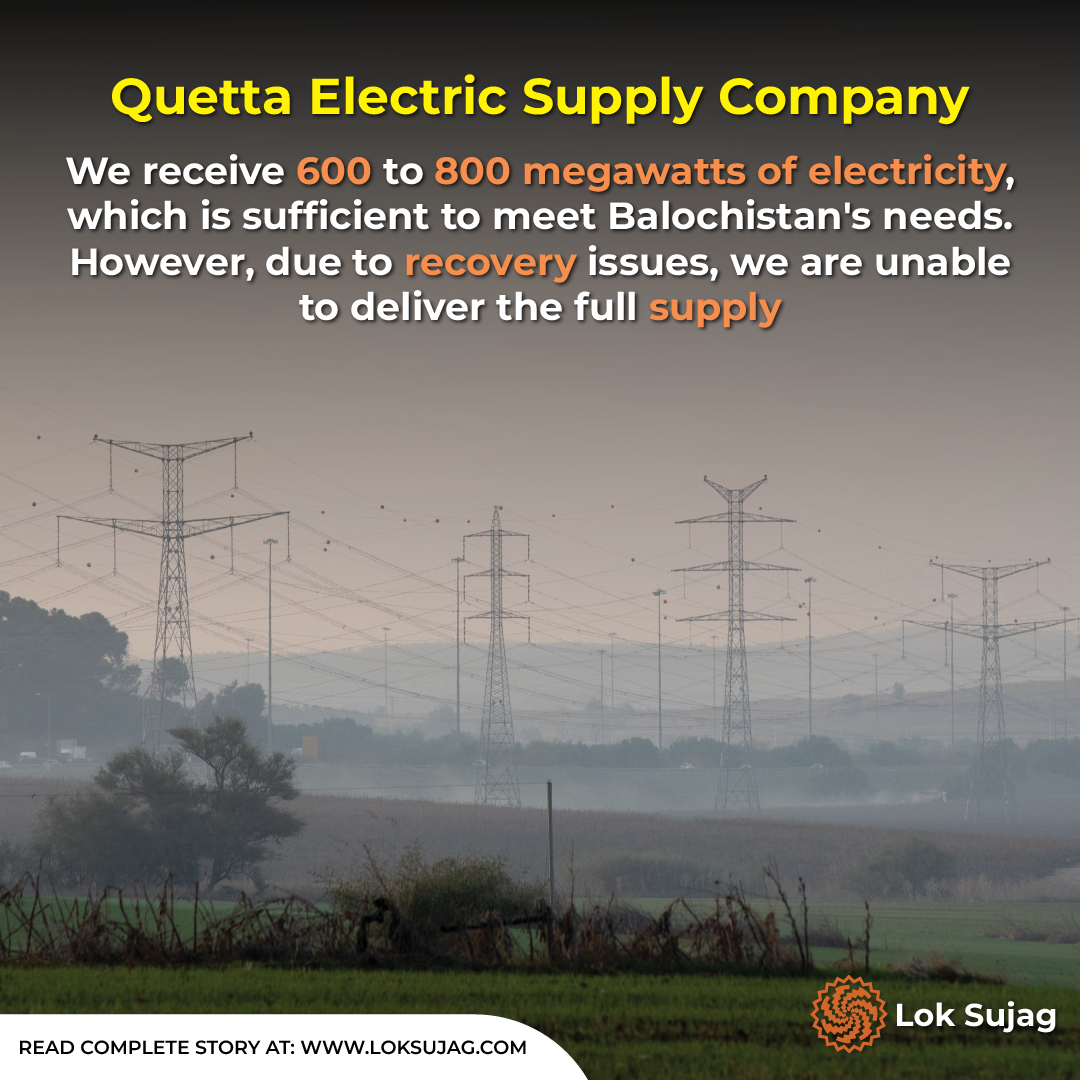
According to him, there is a solar power system in one school each in the Union Council Miskan Kalat and Noroz Kalat while projects and computer systems are also being installed there.
Saeed Ahmed, the principal of the Government Qilla High School, Kharan, says the students are happy after having the facilities of solar power systems of computer labs as they have provided them with better education opportunities. He says that despite lack of electricity in a backward region like Kharan, the students will have continuous access to technology through solar energy and adds that interactive digital content reduces boredom and makes the learning process fun,
“Access to digital resources through a solar-powered computer lab has boosted our children’s interest in education. This initiative will foster their creativity.”
Sameer Ahmed, a 10th-year student at the Qilla High School, is very happy to get a solar power system and a computer lab in his school. He says that it used to be hard to sit in the classrooms in summers but now it feels pleasant. Besides, now we have computer classes on a daily basis.
Also Read
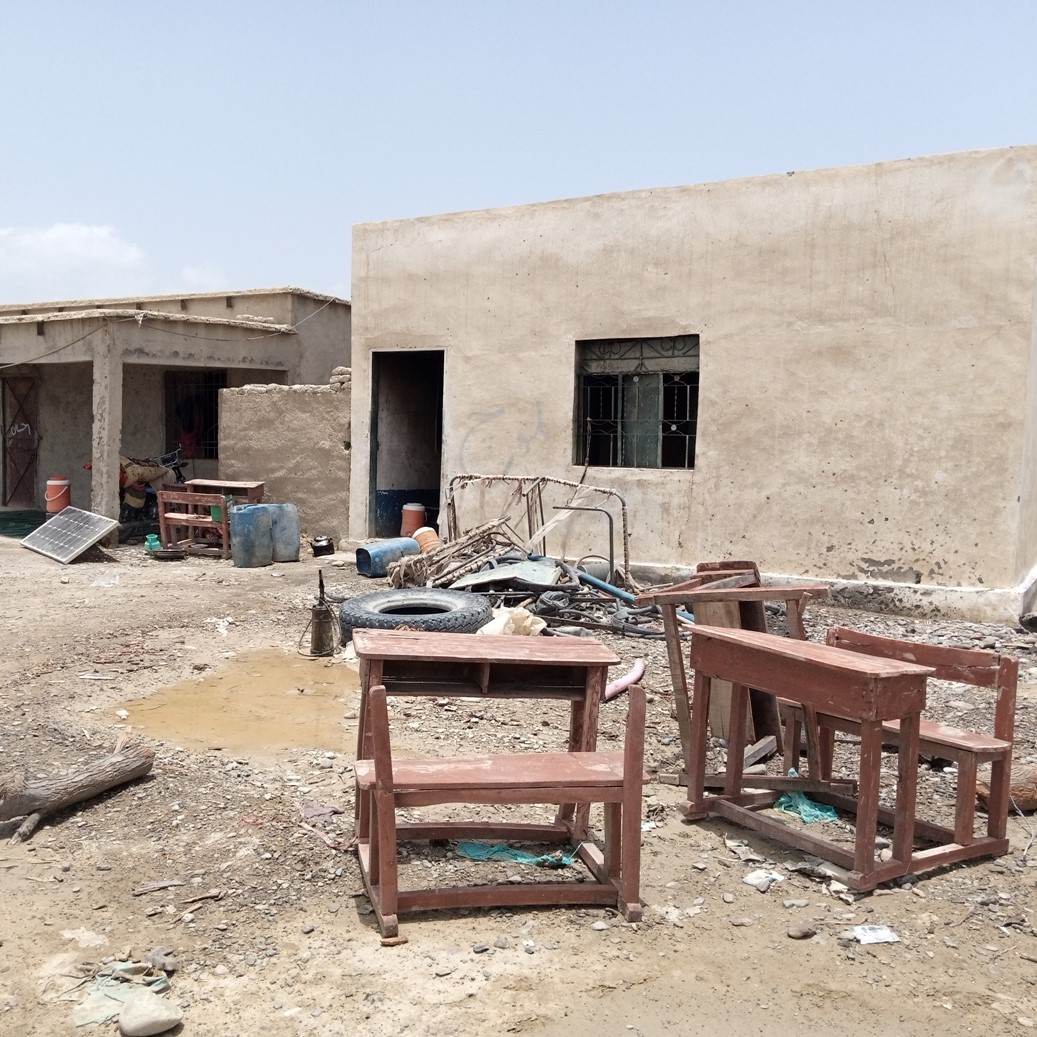
Children deprived of their basic rights as schools in Balochistan remain closed
Along with schools, hospitals in Kharan are also shifting to solar energy. The People's Primary Health Initiative (PPHI), an organization working for provision of basic facilities, is playing an important role in this regard.
PPHI District Support Manager Sohail Baloch says this organisation has provided 22 basic health units (BHUs) in the district with solar energy. He adds that the labour rooms of four health centres, including those in Union Council Miskan Kalat, Noroz Kalat, Dano, and Sarawan have also been switched to solar energy. However, other BHUs have electric lights and fan facilities.
Kharan District Health Officer Sher Ahmad says the health department had sent a proposal to the deputy commissioner to switch the dialysis centre of the District Headquarters Hospital Kharan to solar power and action would be taken on the proposal soon hopefully.
A project was launched in February this year in Balochistan under the Pakistan-China Economic Corridor (CPEC), which will install modern solar power systems at 12 educational institutions and hospitals of Balochistan.
Solar energy has the power to improve crop production not only in Kharan but throughout Balochistan. The number of schools is on the rise while there is less interruption in mobile and internet signals.
Published on 15 Jul 2024
